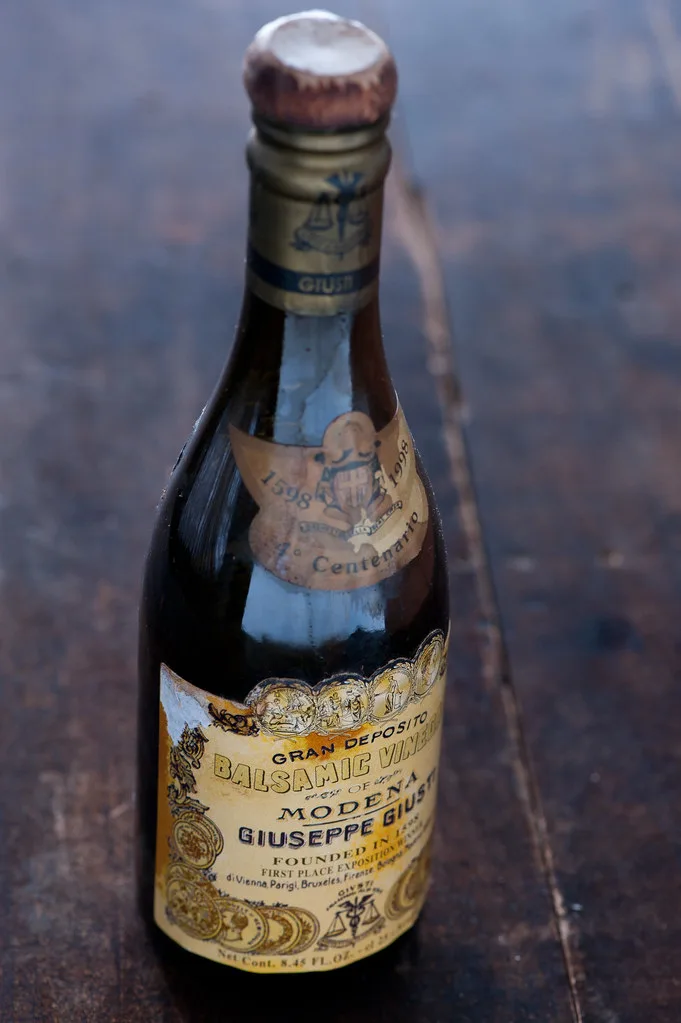In a Nutshell:
- Shelf Life: Balsamic vinegars, whether you’re talking about the traditional kind aged in wooden barrels or your go-to cheaper bottles, last for a couple of years beyond the printed date and keep great quality for 2-3 years after opening.
- Spoilage Signs: While these tangy concoctions rarely spoil, signs of vinegar going bad include changes in smell, taste, and texture — think a sharp, unpleasant odor, odd taste, or texture changes. The formation of “mother of vinegar,” a harmless but unsightly bacterial film, is okay.
- Storage Methods: It’s best to store balsamic vinegar in a cool, dark place (like a pantry), tightly sealed when not in use. Refrigeration is helpful but not necessary.
In this article, we’ll dive into the fascinating world of balsamic vinegars, from their remarkable shelf life to the unlikely event of spoilage, and the best practices for storage. So stick around, and let’s get your balsamic IQ up to snuff.
And that half-open old bottle of balsamic vinegar sitting in your pantry? It’s most likely still okay to use.
But before we get into the meat and potatoes, we need to talk about the types of balsamic vinegar available on the market. This way, you’ll know who is who.

Table of Contents
- A World of Balsamic Vinegars: Your Quick Guide to What’s What
- How Long Does Balsamic Vinegar Last?
- How to Tell If Balsamic Vinegar Is Bad?
- Don’t Panic, It’s Just Science: Normal Changes in Balsamic Vinegar
- Does Balsamic Vinegar Need to Be Refrigerated?
- How to Store Balsamic Vinegar
A World of Balsamic Vinegars: Your Quick Guide to What’s What
There’s a whole spectrum of balsamic products on the market. But how do you tell your DOPs from your IGP, your condimento from your imitations?
Let’s break it down:
The Certified Stuff: Aceto Balsamico Tradizionale di Modena DOP and Aceto Balsamico Tradizionale di Reggio Emilia DOP
These are the crème de la crème of balsamic vinegars, made following centuries-old methods in the Modena and Reggio Emilia regions of Italy. The DOP (Denominazione di Origine Protetta) label guarantees that these vinegars are made from locally grown grape must (unfermented grape juice), aged in wooden barrels for a minimum of 12 years.
The result? A rich, complex, and tangy flavor that’s second to none.
But this artisanal process comes with a hefty price tag — you might find yourself spending over $100 for a tiny bottle.
Aceto Balsamico di Modena IGP
This is the middle ground, a more affordable yet still quality option.
The IGP (Indicazione Geografica Protetta) label means that the vinegar was produced or processed within the Modena region. It’s made from a mix of grape must and wine vinegar, and while it might not have the same depth of flavor as the DOP vinegars, it’s still delicious and versatile in the kitchen.
You’ll likely pay between $10 and $50 for a bottle of this stuff.
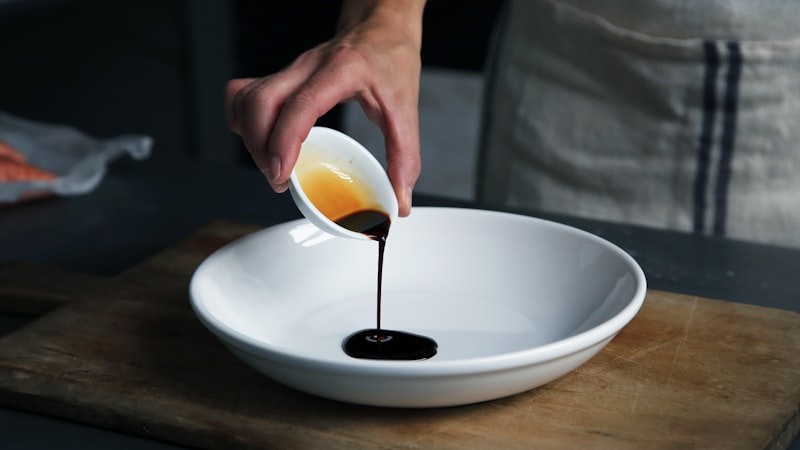
Condimento
This is a bit of a wildcard category.
Condimento balsamic vinegars are often high-quality products, made in the same traditional way as the DOP vinegars, but not fitting all the DOP regulations (like being produced outside the designated regions or not aging for the required time).
They’re a bit of a hidden gem, often offering good value for money and a great flavor profile. Prices can vary wildly, so it’s worth doing a little research before buying.
Imitation Balsamic Vinegar
These are the mass-produced, budget-friendly versions of balsamic vinegar.
While they mimic the color and tangy flavor of traditional balsamic vinegar, they’re typically made with wine vinegar and grape must concentrate, often with caramel color and sugar added.
They’re great for everyday cooking and salad dressings, but don’t offer the same depth of flavor as the higher-end options. You can usually snag a bottle for less than $10.
The good news is that no matter if you’ve bought the top-shelf DOP stuff or the everyday cheap alternative, they all are quite similar in terms of shelf life, spoilage, and storage practices.
If you’d like to read more on the topic, check out this in-depth article by SeriousEats.
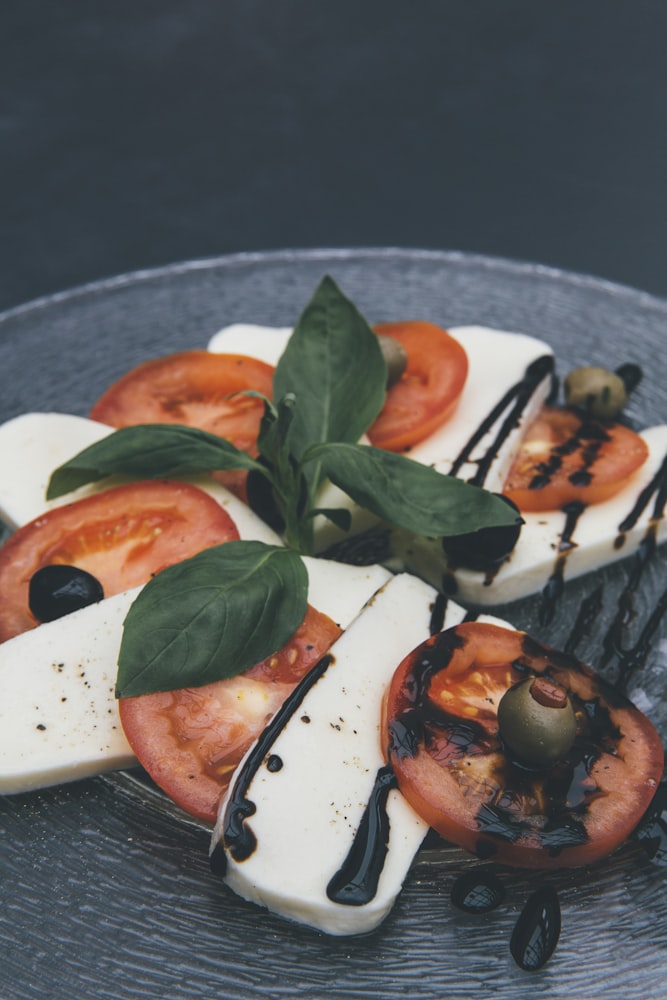
How Long Does Balsamic Vinegar Last?
Unopened balsamic vinegar has a shelf life of 3 to 5 years and easily lasts for a couple of years beyond the “expiration” date. Once opened, it should maintain its best quality for around 2-3 years, though it should remain safe indefinitely if stored properly.
That’s the high-level overview. Now, let’s jump into the details.
Unopened
Balsamic vinegar is a bit like a fine wine or that fish sauce you have in your pantry — it’s pretty darn patient. Even if you leave it in storage for a couple of years, it’ll still taste great after opening.
Balsamic vinegar doesn’t really go bad, but unlike white distilled vinegar, its quality might alter over time. That means balsamic that’s been stored for a couple of years probably won’t taste as good as fresh balsamic vinegar.
(It works the same way for olive oil and other condiments.)
Obviously, good quality balsamic vinegar will stay fresh for much longer than the cheap stuff. So if you’ve forked over a good deal for a bottle of traditional balsamic vinegar, know it’ll easily outlast a $5 bottle.

After Opening
A properly stored opened balsamic vinegar will maintain its best quality for about 2-3 years. And it will stay safe and pretty good for at least a couple more years.
In other words, the clock starts ticking, but don’t worry, it’s not a rush. Your balsamic vinegar is not going to pull a disappearing act like that cocktail sauce you forgot in the back of your fridge.
Nope, balsamic vinegar is more like the soy sauce or apple cider vinegar in your pantry — it will remain safe to consume pretty much indefinitely. But for the best tangy punch, you’d want to use it within that 2-3 year window.
Expired Balsamic
So, what if you unearth a dusty bottle of balsamic from the back of your cupboard that has outlasted your last few smartphones?
Well, even though it might not be at its peak, balsamic vinegar doesn’t really expire like, say, mayonnaise or ketchup might. It’s more like Tabasco sauce in this regard — it will stay safe to use pretty much indefinitely, though it might lose some of its tangy flavor over time.
So, that’s the long and short of how long balsamic vinegar lasts. But how do you tell if it’s past its prime? Let’s dive into that next, shall we?
(Spoiler alert: it’s not as straightforward as spotting mold on your mustard or a funky smell from your fish sauce.)
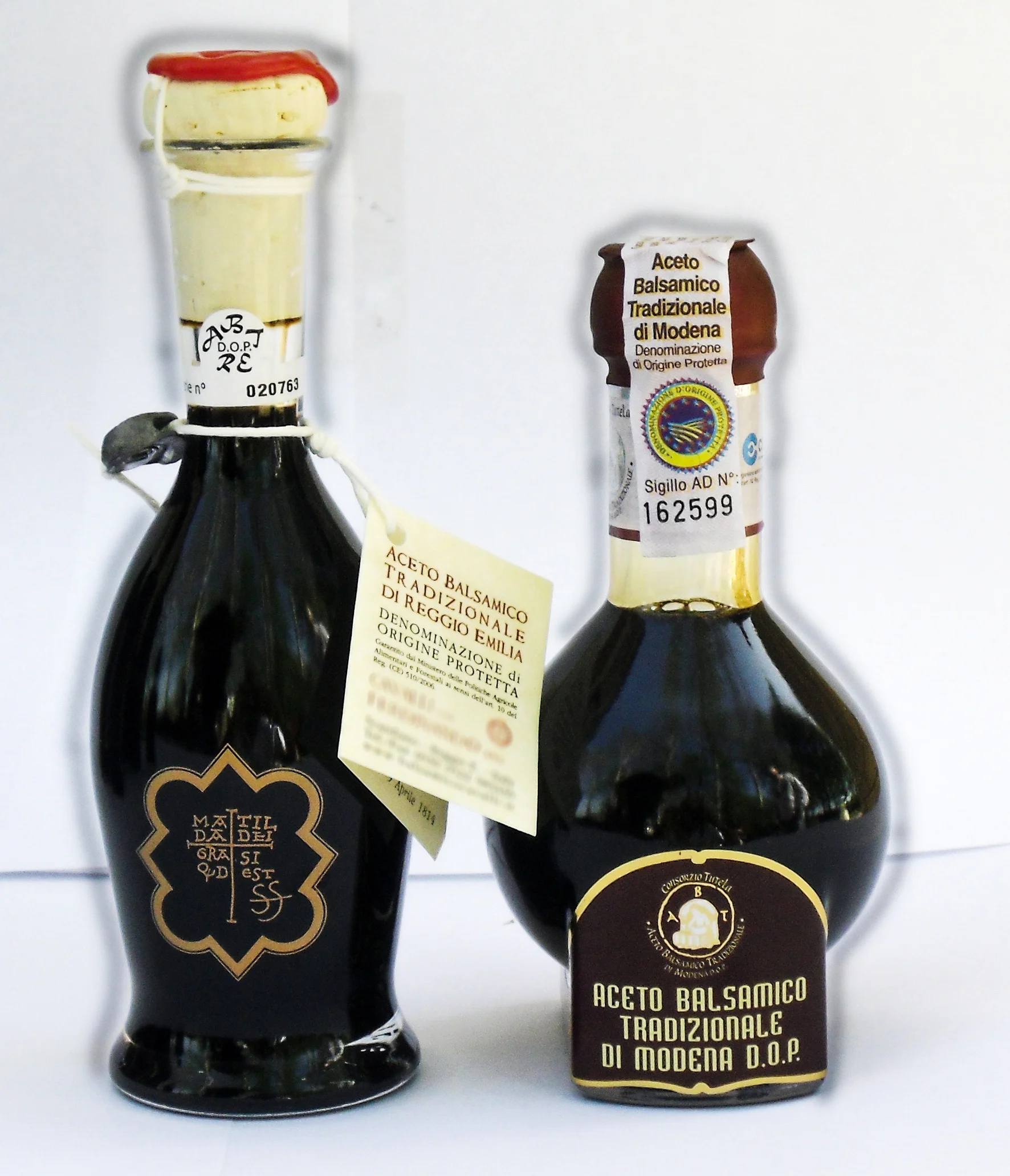
How to Tell If Balsamic Vinegar Is Bad?
In reality, balsamic vinegar turning bad is as unusual as stumbling upon a four-leaf clover in your backyard. But if you notice an unusually sharp smell, a change in taste, or bacterial growth, it might be time to toss it.
Smell
The nose knows! If your balsamic vinegar smells unusually sharp or just plain off, it could be a sign that it’s past its prime.
This isn’t the funky aroma that you might get when you open a bottle of fish sauce or even Worcestershire sauce — this will be a strong, unpleasant odor that’s not characteristic of balsamic vinegar.
Remember, good balsamic has a rich, slightly sweet, and tangy aroma.
Mold
If you notice any signs of bacterial growth — think fuzzy mold, like the kind that might sneak up on your tomato paste or Dijon mustard when you’re not looking — it’s time to throw out your balsamic vinegar.
This is quite rare, but it can happen if the vinegar is contaminated. A quick once-over is usually enough to spot anything funny.
Taste
A change in taste is another sign to watch for. If your balsamic vinegar tastes more like a bad batch of barbecue sauce than the tangy condiment you love, it might be time to bid it farewell.
As balsamic vinegar ages, it may lose some of its tanginess, but it shouldn’t taste off or unpleasant.
Now that we’ve covered the potential red flags, let’s move on to those changes that might raise your eyebrows but are actually no cause for concern.
Don’t Panic, It’s Just Science: Normal Changes in Balsamic Vinegar
Balsamic vinegar, like a good bottle of sriracha or hoisin sauce, can show some changes over time. But before you toss it out faster than a bland Italian dressing, let’s cover what’s normal and what’s not.
Sediment
Finding sediment at the bottom of your balsamic vinegar bottle is as surprising as finding molasses that isn’t slow. But it’s completely normal.
It’s just a result of the natural fermentation process and can be easily filtered out if you find it unappetizing.

“Mother of Vinegar”
If you notice a gelatinous blob forming in your vinegar, don’t freak out. It’s not an alien life form. It’s just “mother of vinegar” — a harmless bacterial culture that can form in fermented products.
It might look like something out of a B-grade horror movie, but it’s totally safe, and you can strain the vinegar through a coffee filter or cheesecloth to remove it if you prefer.
So there you have it — all you need to know about when to worry and when to just go with the flow with your balsamic vinegar. Remember, when in doubt, trust your senses.
Next up, let’s talk about storage practices.
Does Balsamic Vinegar Need to Be Refrigerated?
In short, whether you refrigerate balsamic vinegar or not is up to you. Both unopened and opened balsamic vinegar are shelf stable. However, refrigeration can help to extend the vinegar’s optimal flavor and quality, especially for an expensive bottle.
In other words, balsamic vinegar is pretty chill about where it lives, and it won’t go bad if not refrigerated. Unlike some of your more sensitive condiments (looking at you, tartar sauce), a bottle of balsamic, whether opened or unopened, doesn’t need to sit in the fridge.
However, if you’ve splashed out on an expensive bottle of Aceto Balsamico Tradizionale, you might want to refrigerate it after opening.
The cold can help to maintain its complex flavors for longer. But don’t sweat it if you don’t have the fridge space — it won’t hold a grudge.
A Note on Other Vinegars
While we’re at it, let’s clear up some vinegar misconceptions.
Like balsamic, most other vinegars, like rice vinegar or white wine vinegar, don’t need to be refrigerated. But remember to always check the label because some specialty vinegars or vinegar-based sauces (like balsamic vinaigrette dressings) might prefer the chill of the fridge.
Now that we’ve cleared up the refrigeration question, let’s chat about the best ways to store your balsamic vinegar.
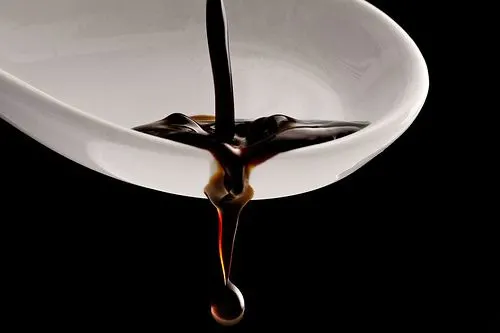
(credit: 96dpi)
How to Store Balsamic Vinegar
Storing balsamic vinegar is as easy as storing your favorite teriyaki sauce or anchovy paste. The key is to keep it in a cool, dark place, away from heat and direct sunlight.
Location, Location, Location
Like a vampire avoiding a suntan, balsamic vinegar prefers the dark.
Store balsamic vinegar in a dark cupboard or pantry, away from direct light. Sunlight can degrade the quality of the vinegar over time, leading to a loss of that tangy flavor we all love.
Keep It Cool
While your balsamic vinegar won’t break a sweat in the heat like horseradish or some other condiments might, it still prefers cooler temperatures. A spot in your kitchen that doesn’t get too hot or experience temperature swings is ideal.
Seal the Deal
Lastly, but perhaps most importantly, always make sure your balsamic vinegar is properly sealed. An airtight seal prevents oxidation, which can lead to a change in flavor.
So, once you’re done drizzling it on your salad or adding it to your salad dressing, make sure the cap or cork is tightly in place.
